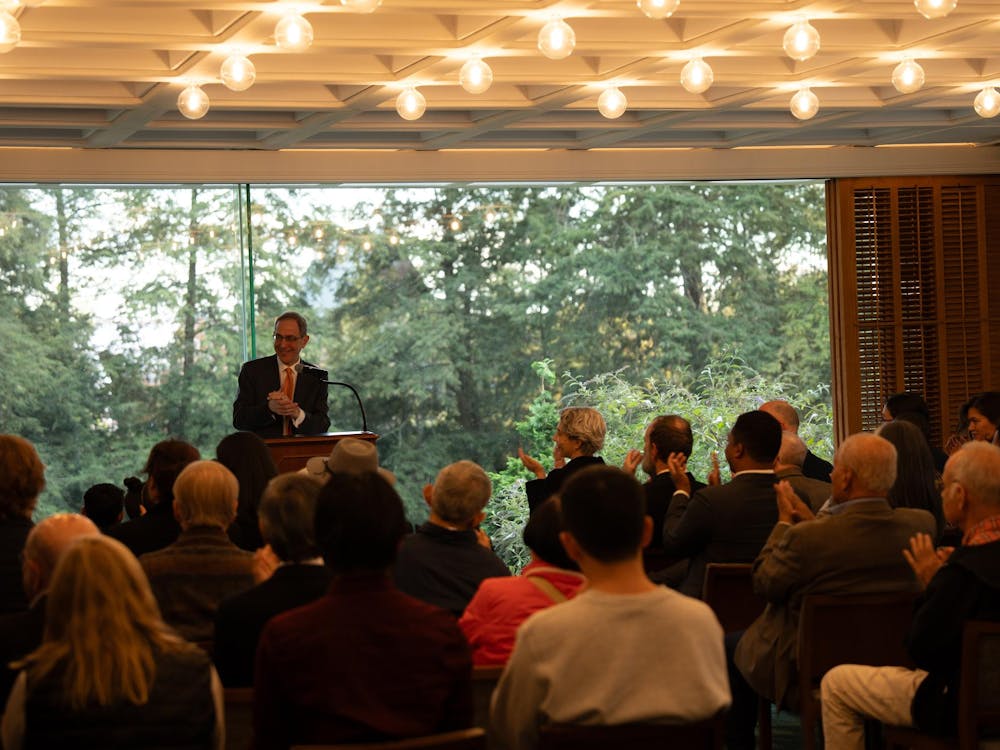After the disbelief at the absurdity of the situation wears off, the Danish cartoon riots have provided some excellent material for making broader points about civilization and the world for any group that cares to weigh in.
"You see, this is what comes of caring about religion," say the wise neo-Humanist pundits, who wonder why anybody could care enough about anything to die for it in a world with 24-hour movie channels.
"Jes' goes to show there's only room on this here Earth for one of us, and darned if it's gonna be them Muslims and not us Americans left standin'," opine the neo-Cons.
"It's a vindication of liberty and the freedom of speech. Three cheers for Denmark!" sing the old-fashioned liberals.
"Come now," say the new liberals, rolling their eyes urbanely, "we're just like them —and what the rioters want is really quite reasonable. Danes shouldn't be allowed to offend Muslims."
I have heard all of these views expounded in the last few weeks. Perhaps the wisest response I hear less often: "Clearly, the universe or its maker has a strange and possibly cruel sense of irony, that scores should die for the sake of cartoons they've never seen, whose content they probably understand only dimly, if at all."
Indeed, the cynic's comment underscores something peculiar about these riots. The hullabaloo about the cartoons is entirely incommensurate with the relative meekness of the cartoons themselves. None of the cartoons is as offensive as the average cartoon published about Jesus and Mary in the average Danish newspaper, and more importantly, they were published in Denmark. Europeans and other Westerners have been making images of the prophet for centuries — at least since the days of Charles Martel. Why have these particular cartoons become a casus belli and not, for instance, the image of Mohammed in my high school world history textbook or, for that matter, the hundreds of images of him you can find on Google? Why did the citizens of Beirut, Gaza, Damascus, Kabul and Tehran choose this moment to object to the commonplace.
Western practice of sparing no one the terrible calumny of being depicted? And even if these particular cartoons are exceptionally odious, why did the streets of the Muslim world start churning only now? They appeared in the Jyllands-Posten in September. Why the wait?
But something else is fishy. How did these rioters procure literally hundreds of Danish flags? Perhaps there are Danish souvenir shops in Islamabad, Northern Nigeria and Libya? Oddly, most news sources have passed blithely over the riddle, as if all cities had reliably abundant sources of Danish flags. One newspaper in Frankfurt did try to discover the origin of the flags burned in Damascus but could only trace them as far back as a large shipment from Pakistan. This is also strange, since Pakistan and Syria are hardly linguistic, cultural or political allies, but it hardly resolves the mystery, since Danish flags are not, I presume, mass-produced in Peshawar.
Nor is the source of the flags the last enigma. The nature of the violence is unusual, and scarcely deserves the label "riot" at all. As a general rule, riots destroy property at random. They are uncontrollable and devastate shops and homes wherever they occur. They also tend to spread. These cartoon "riots," on the other hand, have mostly targeted Danish embassies. Now, in most cities, embassies are grouped together near each other. In other words, the torched Danish embassies we have seen pictures of are not sitting amongst the houses of the people that destroyed them. This means that the "rioters" had first to travel to the embassy, meet up with their compatriots and only then, begin "rioting."
Offended religious extremists do not spontaneously flock together in places they do not live, stockpile foreign flags months in advance and coordinate attacks on diplomatic compounds. All of these activities require organization, and if they were organized, somebody organized them. That thought ought to alarm us. These riots have flabbergasted the Danes and stunned the whole West. Apparently, the shock has also blinded us. We cannot keep gaping and stammering about a "clash of civilizations." The riots have much less to do with the religious fanaticism of the Molotov-cocktail-pitching Libyan and much more to do with whoever it was who handed this guy a Danish flag and told him to arrive at a certain address at a certain time. I have no idea who these shadowy organizers are, but I would sleep better at night if somebody did. David Schaengold is a philosophy major from Cincinnati, Ohio. He can be reached at dschaeng@princeton.edu.








